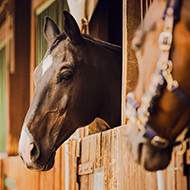
The findings raise the critical need for pandemic preparedness.
A new study by the Royal Veterinary College (RVC) has revealed significant and antigenic diversity in European swine influenza, reinforcing the need for pandemic preparedness and vaccine effectiveness.
Researchers examined swine flu virus data from 2010 to 2020, with European partners, teams in the USA and Taiwan and The Animal and Plant Health Agency. The team also tested the immune responses to a variety of swine influenza variants.
Key findings show that extensive variation in circulating swine influenza viruses could have implications for vaccine updates in both pigs and pandemic preparedness.
The study also revealed that evolving flu strains could reduce the effectiveness of existing vaccines, while variable human immunity to swine flu variants could pose serious pandemic threats.
The findings, published in the Journal of Virology, highlight the need to continually update pig vaccines and pandemic preparedness plans.
Amelia Coggon, a PhD student at the RVC, said: “Our study has high relevance to pandemic preparedness and swine flu vaccination. By better monitoring how these viruses evolve, we can ensure vaccines used in pigs remain effective, reducing production losses as well as reducing the risk of human infection.
“It also highlights the critical role of international collaboration and ongoing surveillance for zoonotic diseases. Just because we stop looking, it doesn’t mean these viruses disappear. Protecting human health begins with investing in animal health, and that means sustained, cross-sector funding - especially for diseases with pandemic potential.”
Katy Shaw Saliba, co-author of the paper and formerly of the JHCEIRS project, added: "Here, the diversity of the influenza virus in European swine and its serological cross-protection with human antisera was quantified, allowing for an understanding of which viruses could pose greater risk for animal and human health.
"The findings from this paper highlight the value of international research collaborations in identifying influenza virus risk."
Image (C) Shutterstock.



 Zoetis has launched a new survey to identify management techniques for Equine Herpes Virus (EHV).
Zoetis has launched a new survey to identify management techniques for Equine Herpes Virus (EHV).